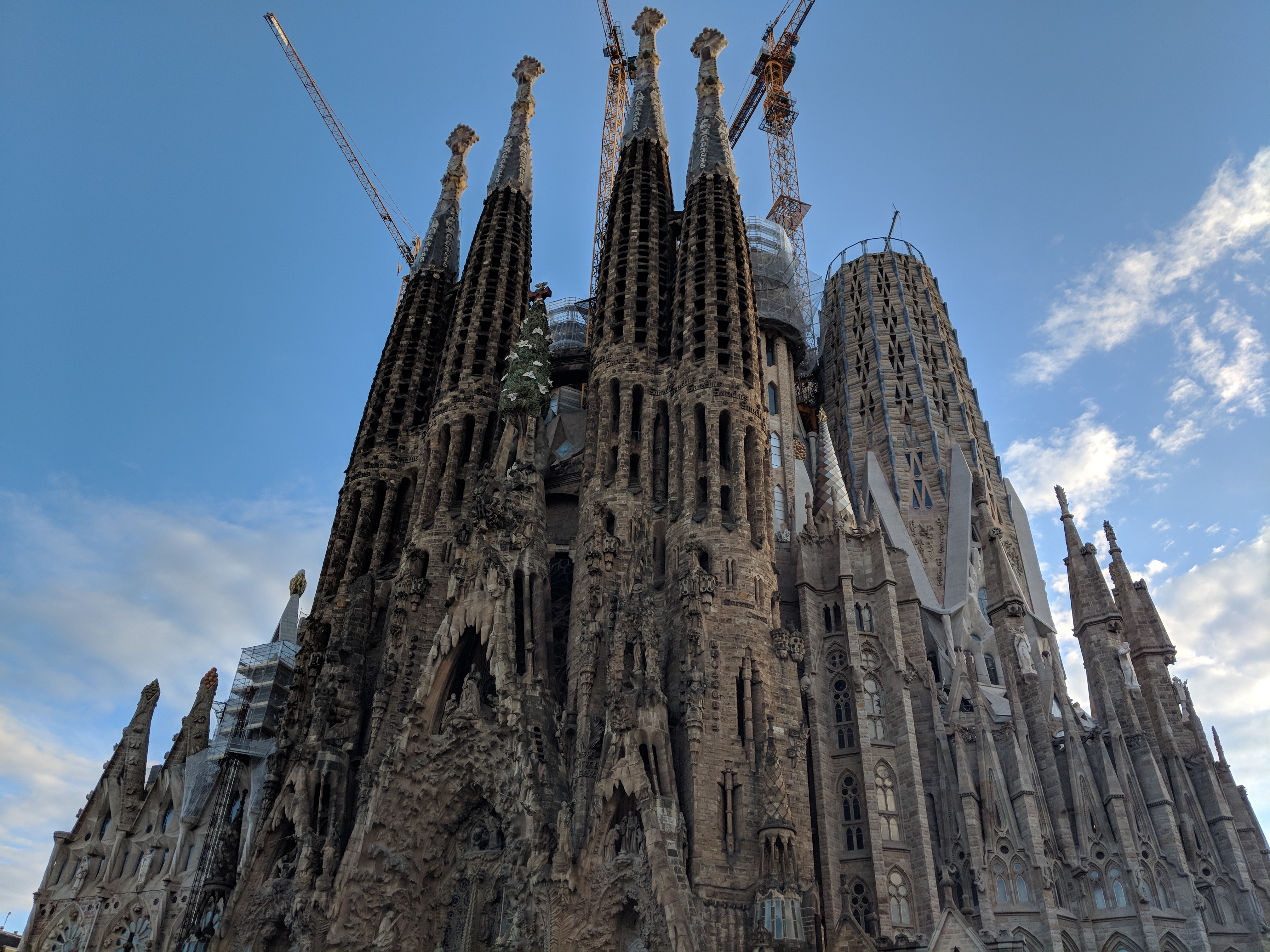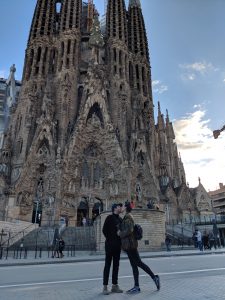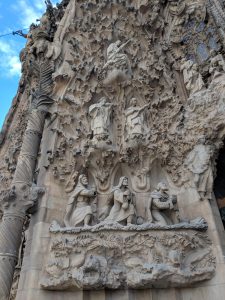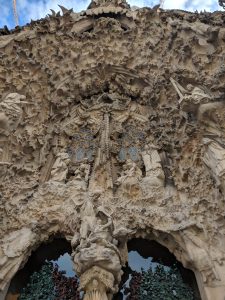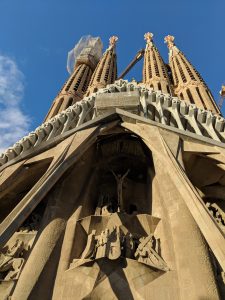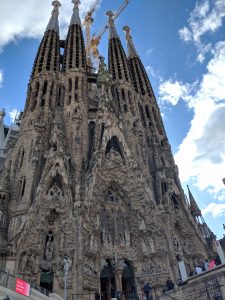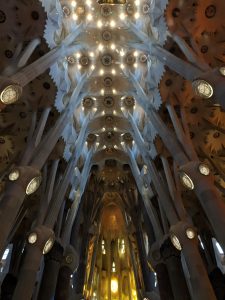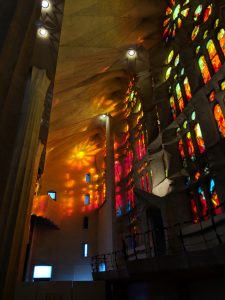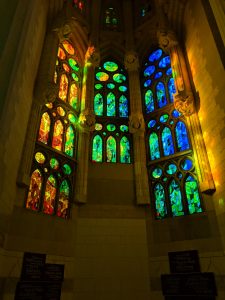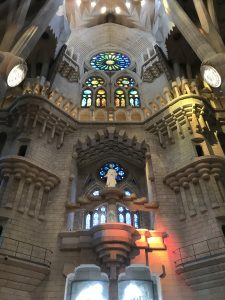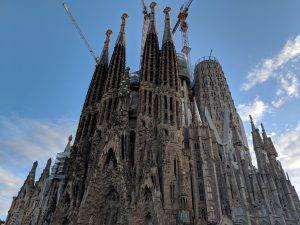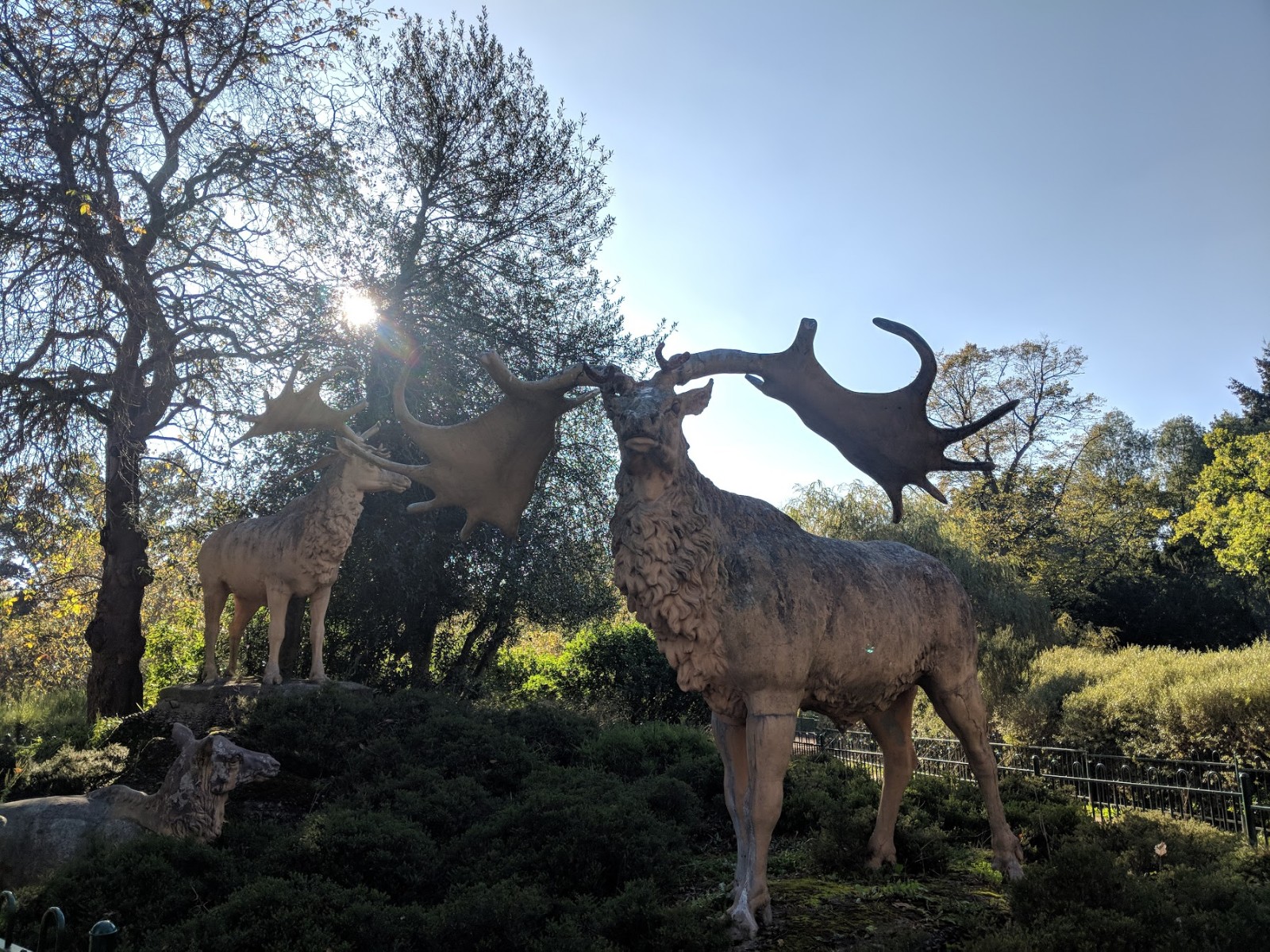We have managed to not talk about it for over 2 weeks but it’s back on the top of our agenda now the sun is out in England again! We weren’t kidding when we said it was spectacular, but in case you needed that last little push to spend the money on going inside to visit this incredible place(or to add it to your Barcelona itinerary), here are our 5 reasons why you have to visit Sagrada Familia.
1. Its History
In short, it’s genuinely breathtaking. Gaudi was given money to transform Barcelona… but he went over budget, there are a few outstanding pieces across the city, but that’s about it. When you see the Basilica you will underatsnd why!
La Sagrada Familia is a large Roman Catholic church in Barcelona, Spain, that has been under construction since 1882. The main architect of the church was Antoni Gaudi, who died in 1926 when La Sagrada Familia was only about 25% complete.
The design of La Sagrada Familia is believed to be Art Nouveau style, with influences of Spanish Late Gothic, and Catalan Modernism. It was designed to be a cathedral-sized building, but it wasn’t intended to be a cathedral.
Although not yet completed, yes over 136 years later, La Sagrada Familia was declared an UNESCO World Heritage Site and Pope Benedict XVI proclaimed it a minor basilica in 2010.
2. The Building
Gaudí believed that no man-made object should be constructed higher than the work of God. Therefore, La Sagrada Família, when completed, will tower at 170 meters (560 ft), which was intended to be one meter less than Barcelona’s highest point, Montjuïc hill.
La Sagrada Familia has three different facades, each with a different meaning, and with a different aethetic in terms of how things are sculpted. The first one, the Nativity facade, was completed in 1935 and is influenced directly from the Gaudí’s style. It is dedicated to the birth of Jesus with the symbolic sunrise to the northeast. The facade also shows elements related to the Nature and the creation of life.
The second is the Passion facade, slightly simpler and dedicated to the suffering of Christ during his crucifixion. The facade was supposed to show the sins of human beings. Several architects worked on this facade and tried to remain faithful to Gaudí’s vision while bringing their own style at the same time. The facade is directed to the West and faces the sun as a symbol for the death of Christ.
The last one is the Glory facade, the largest facade which is still under construction. It is dedicated to the glory of Jesus and the road to reach God, going through death, final judgment and glory.
Gaudí disliked straight lines and angles because they don’t often appear naturally. Instead, he based his design on the swirling curves of nature.
There is endless natural symbolism within La Sagrada Família. The interior structure is supported by large pillars that look like trees. One pillar has a turtle at its base, and another a tortoise in order to show the balance between land and sea.
It really is one of those places that you need to see to believe. The sheer scale and intricacy left us both speechless when we walk inside!
3. The Windows
Gaudí said that colour was the expression of life, which is why he decided to make its presence felt in the Sagrada Familia. Go at sunset if you can and take your camera, it’s the most amazing sight! Wander around slowly and take in all of the purposefully designed windows, and watch the light dance across the walls and the floors and enjoy every second of it. Can you tell how much we loved them? The windows are a focal point of the construction, with some more than two stories high. They are designed to draw the eye upwards and inspire meditation on the divine.
4. The Crypt
Ok, so it’s where Gaudi is buried, and you can only go down either during hours of worship or with an expensive guided tour but you can see through the windows to it, and it looks amazing. It is covered by a large vault where the largest arches meet, and inside there is an outstanding sculpted polychrome image of the Annunciation to Mary.
It also has a central altar with an altarpiece by the sculptor Josep Llimona, and four chapels dedicated to the Virgin of El Carmen (the site of Gaudí’s tomb), Christ, the Virgin of Montserrat, and Christ on the cross (the site of the tomb of Josep María Bocabella, who was responsible for the idea of building La Sagrada Familia). The floor of the crypt is bordered by a Roman mosaic with images of wheat and vines.
5. It might be finished by 2026
La Sagrada Família will take longer to complete than the Egyptian pyramids. It started in 1882 and is hoped to be completed in 2026 (the centennial of Gaudí’s death), though it might not be finished until as late as 2040. The Great Pyramid, by comparison, only took 20 years. We’re not actually sure why it’s taking that long, some people say it’s because it is so intricate and they want it exactly to Gaudi’s design, others say it’s the Spanish manana attitude…
Just remember, by paying to visit, you are helping the completion of it as all money goes to the building work.
We really should just take the hit and rename our lists, but here is the Fourthousandweeks bonus point:
6. Ways to beat the queues and get in cheap
YOU MUST MUST MUST book in advance, it’s really simple to do so online here, and you can see all the extras you can get (we would recommend the audio guide) and when it is cheaper to go (if you’re under 30 you can get money off by visiting Weds/Thurs/Fri after 6pm). You could buy tickets there but the queues are enormous as it is the most visited place in Barcelona! Remember – wear appropriate clothing: it is a church so make sure you aren’t in tiny shorts and a cap, you will be asked to cover up and remove the headgear.
Remember to let us know what you thought in the comments section, and if you like what you read share away!

